- Skip to main content
- Keyboard shortcuts for audio player

As discrimination complaints soar, parents of disabled students wait for help

Jonaki Mehta
More students with disabilities are facing discrimination in schools
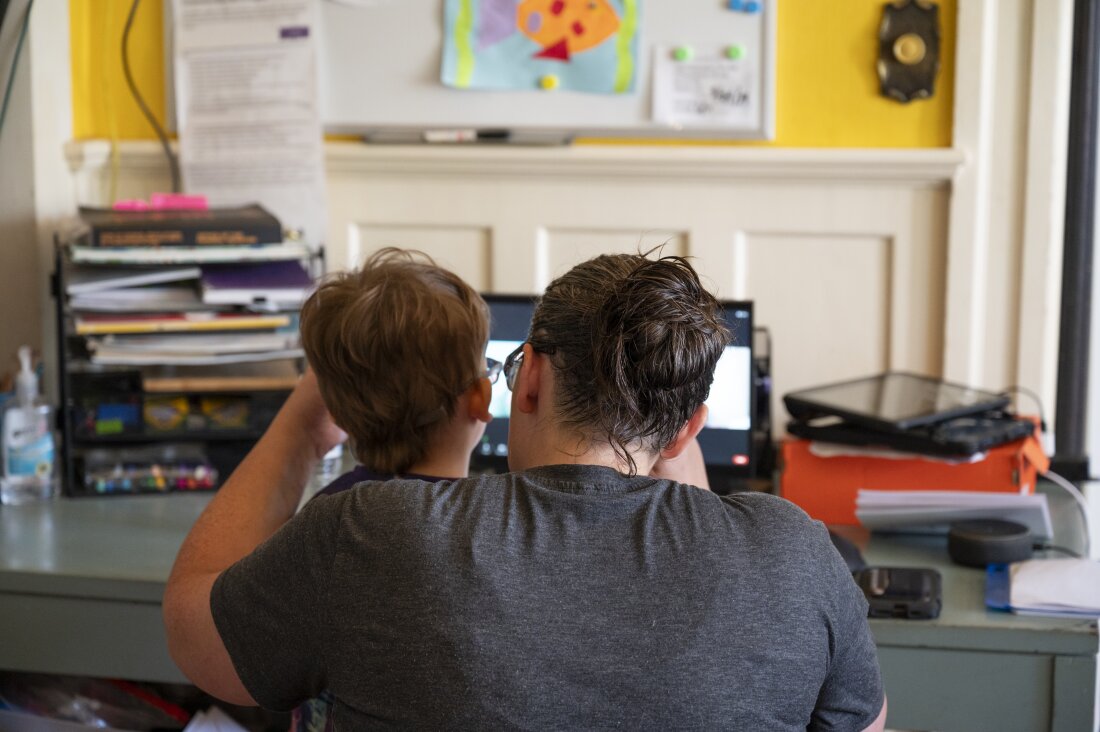
Six-year-old Sam and his mother, Tabitha, attend a virtual class with Sam’s teacher of the deaf and hard of hearing. Cindy Elizabeth/for NPR hide caption
Sam is a bespectacled 6-year-old with a winning smile and a penchant for dinosaurs, as evidenced by the roaring Tyrannosaurus rex on the back of his favorite shirt.
“He loves anything big, and powerful, and scary,” says his mother, Tabitha. Sam grins mischievously as he puts his hands together in a circle — the American Sign Language word for “ball.” He’s telling Tabitha he wants to start his day in the colorful ball pit in a corner of his playroom in their home in central Georgia.
It’s a precious moment of unstructured fun in the day. Soon, he’ll have a virtual lesson with his new teacher for the deaf and hard of hearing, followed by occupational therapy, and speech and language pathology.
Sam has significant disabilities, including cri du chat syndrome , a rare genetic disorder.
He is partially deaf, so he primarily communicates using American Sign Language, or ASL, and mostly uses a wheelchair to get around.
“Sam has a complex case,” says Tabitha, who is no stranger to disability. She used to be a special education teacher, and three of Sam’s seven siblings also have disabilities.

Sam, who has several disabilities, loves sensory play time in his homemade ball pit. Cindy Elizabeth/for NPR hide caption
Having that kind of experience means Tabitha knows what it takes to fight for the rights of her loved ones, including Sam. “I want him to have every avenue open to him. And what I see happening is obstacles placed and limitations set. And that is my worst fear.” That fear led Tabitha and her husband, John, in December 2022, to file a discrimination complaint with the U.S. Department of Education, saying that Sam’s school district has failed to provide him with the services the law says he’s entitled to.
They’re one of a record number of complaints – 19,201 – the department’s Office of Civil Rights, or OCR, received in the last fiscal year . These complaints involve discrimination based on race, color, national origin, age, and sex and disability.
While OCR is a last resort for many parents, the office is overwhelmed with the volume of complaints, and Sam’s case is one of thousands that is lagging in the system.
Since Sam started school, Tabitha and John have struggled to get him the services they say he needs to succeed. NPR is not using last names or naming the school district in this story to be able to freely share Sam’s health concerns.

Sam plays in a tent in his playroom. Cindy Elizabeth/for NPR hide caption
Their complaint, like so many others, argues that Sam is not getting a “free and appropriate education,” which federal law says disabled children are entitled to. When Sam first began going to prekindergarten, Tabitha says the district did not provide a wheelchair-accessible bus, meaning Tabitha would often end up taking him herself. The building is only a few blocks from their home, but with his wheelchair and medical equipment in tow, it was difficult for Tabitha to transport Sam on her own.
And when they arrived at school, she often found the four accessible parking spaces occupied by school police or other cars. In addition to the physical barriers, Tabitha says Sam never had a dedicated special education instructor in his classroom. His previous nurse, Sherri, always accompanied him to school. “I was there in the capacity of a nurse,” she says, “but I also had to be his teacher because he didn't have a one-on-one like you should have in the classroom.”
Sometimes, Sherri and Tabitha say, there was a paraprofessional in Sam’s classroom, but not every day. And neither his teacher or the paraeducator knew ASL, making communicating with Sam a challenge.

Tabitha and John’s formal complaint against their child’s school district includes concerns about accessibility for students with disabilities to parts of the campus. One example is a crosswalk with a curb cutout for wheelchair access on one side, and no cutout on the other. Cindy Elizabeth/for NPR hide caption
Sherri says Sam was often left wandering aimlessly in class. “It was very frustrating watching him not be able to do all the things other kids could do,” she says. After many meetings with the school staff, Tabitha concluded they were not going to give Sam the services he needed. So, in December 2022, she made a formal complaint to OCR.
Her complaint listed several things: the lack of accessibility in parts of the school, including the parking lot and playground, the lack of special education support for Sam in the classroom, and other accessibility barriers.
Five months later, OCR opened an investigation.
A decades-long struggle over special education funding
NPR reached out to Sam’s school district for an interview, but their director of special education said she could not discuss Sam’s case due to privacy concerns. In an email, she told us that “the district takes each student’s individual needs into account when developing individual educational programs for students with disabilities. Determinations about accommodations and services are made by individualized educational planning teams made up of the student’s educators, related service providers, the family, and sometimes outside experts invited by the family or district in order to create a detailed plan to offer the student a free appropriate public education.”
School districts and states have long complained that they do not receive enough funds from the federal government to meet the needs of disabled students. When the Individuals with Disabilities Education Act (IDEA) was passed in 1974, it authorized federal funding for up to 40% of what it costs to provide special education services for students with disabilities .
But the federal government has never met that target . “We've been waiting 40 years now for the federal government to actually live up to its promise of fully funding the IDEA,” says John Eisenberg, executive director of the National Association for Special Education Directors.

The playground at Sam’s school is another example of a space Tabitha says he cannot access with his wheelchair: There are no ramps, and the wood chips on the ground prevent wheelchair users from entering the playground. Cindy Elizabeth/for NPR hide caption
Pandemic-related school funding helped for a while, but now that’s running out. At the same time, the number of children who qualify for special education in the U.S. is growing. “You cross-section that with the shortages of [special education] specialists and experts, and you are ripe for these issues to take place,” says Eisenberg. It’s been more than a year and a half since Tabitha filed her complaint, and the investigation into Sam’s discrimination case is still ongoing.
Since then, Tabitha has seen some improvements: the school eventually provided Sam a wheelchair-accessible bus. But then, months later, he began attending school virtually from home because of a temporary medical condition.
The school also provided an ASL interpreter for a portion of last year, but they have taken that service away for the upcoming school year, in part because Sam’s hearing loss does not meet the state of Georgia’s criteria for “deaf or hard of hearing,” meaning the district isn’t compelled to provide him instruction in ASL.
“It’s that whole theory of ‘he’s not deaf enough, I don’t know if you know how offensive that is',” says Tabitha. “I’m being told, ‘but he can hear,’ and I’m saying ‘but he can’t hear all of it.’ ”
As she awaits some resolution from OCR, Tabitha is considering a lawsuit against the district. NPR spoke with several parents of students with disabilities around the country who say their OCR cases are taking months, even years to resolve. Many, like Tabitha, are seeking outside help from advocates and lawyers to address their concerns.

Sam’s parents are fighting for what they see as a lack of basic special education services. The district recently acquired a wheelchair-accessible bus. Cindy Elizabeth/for NPR hide caption
“These parents are right to be concerned about how long it can take,” says Catherine Llahmon, the assistant secretary for civil rights at the Education Department. She acknowledges the frustration that parents and educators alike are experiencing in the face of rising disability discrimination complaints, which she calls “deeply, deeply concerning.”
But she says her office’s case managers are overwhelmed, each carrying 50 or more cases. Nonetheless, she says 16,448 of the 19,201 cases in the last fiscal year were resolved.
She notes that these investigations involve a long and complicated process. And while she knows that adds to parents’ frustrations, she says the department owes them “the careful evaluation of facts, careful investigation of the documentary record, talking to people at the school, as well as talking to witnesses and to families about their experience.”
Llahmon says that in the first year of the Biden administration, the OCR streamlined the online process for filing complaints to make it easier for parents. In the last fiscal year, they also added an option for “early mediation,” which allows parents and districts to agree to a single meeting with an OCR mediator to resolve their concerns rather than going through a lengthier investigation process.
“We've seen more than a 500% increase in the successful resolutions by mediation since we have had that process in place,” says Llahmon.
Tabitha and John have previously tried mediation through a state complaint, but they were dissatisfied with that process, so they opted for a full, federal investigation this time.
A glimpse of what progress looks like
As the new school year approaches, Tabitha is cautiously excited about a new development. For a few weeks, the school district has been providing Sam with instruction in ASL.
Jessica, Sam’s new teacher for the deaf and hard of hearing, is spending an hour a day, 5 days a week with Sam, via Zoom. Both she and Tabitha say they have seen his vocabulary and expression expand since the lessons started.
“It’s just magic,” says Tabitha. “This has been pulling the curtain into a dark room and seeing the light of what’s underneath Sam.”
She says she’s thrilled to watch Sam learning so many new things. “But imagine if this was every day, like it's supposed to be, and all day like it's supposed to be.”

Sam plays poolside with help from his mom. Cindy Elizabeth/for NPR hide caption
The school district's individualized education plan for Sam next year does not include an ASL interpreter, though his hour-long lessons with Jessica will continue.
And OCR has told Tabitha that staff there are in the final stages of their investigation. In the meantime, she’s been consulting attorneys about a due process claim, but says they likely can’t afford a lawyer.
As the summer weeks roll on, Tabitha is looking ahead to the coming school year, when she hopes Sam’s health will allow him to return to a general education kindergarten classroom with the adequate special education support to learn.
She says she’ll continue fighting for Sam’s rights until he gets the quality education other children receive: “I want him to experience what every 6-year-old little boy gets to experience.”
Help strengthen public media. Our future depends on you.
The need for trusted journalism has never been greater.
PBS News Hour delivers the reliable, fact-based reporting you rely on, and your support ensures we can continue this essential work. Right now, your support goes twice as far—every gift is being matched, dollar for dollar.
Don’t wait—our match expires at midnight on December 31—this is your last chance to keep PBS News Hour strong in the year ahead. The future of public media depends on viewers like you.
If you can, please consider a monthly donation. Thank you.
What’s driving a special education teacher shortage and how schools are responding

John Yang John Yang

Claire Mufson Claire Mufson
Lana Green Lana Green
Leave your feedback
- Copy URL https://www.pbs.org/newshour/show/whats-driving-a-special-education-teacher-shortage-and-how-schools-are-responding
Correction: A transcription error displayed the incorrect spelling of Nadene Stein. The name has since been corrected.
More than 7.5 million American students have disabilities that qualify them for individual education plans. But teachers trained in this critical area are in short supply. Special education teachers and administrators share how the shortage is affecting them, and John Yang speaks with Kimber Wilkerson, professor of special education at the University of Wisconsin-Madison, to learn more.
Read the Full Transcript
Notice: Transcripts are machine and human generated and lightly edited for accuracy. They may contain errors.
Seven and a half million American students, or roughly 15 percent of them, have disabilities that qualify them for special instruction, what's known as individual education plans. But teachers trained in this critical area are in short supply.
At the beginning of the current school year, 70 percent of schools surveyed said they had openings for special education teachers. We asked special education teachers and administrators to tell us how the shortage is affecting them.
Maryellen Robinson, Massachusetts:
You're spread thin and you're working with a student on a lesson to meet their academic goals, but you're also thinking about the student behind you who's working on maybe feeding or they're getting their medications, and you're thinking, how can I support that student when I'm working with another student?
My name is Maryellen Robinson. I am a special education teacher for students who have complex support needs in Boston, Massachusetts.
Sarah Davis, Minnesota:
My name is Sarah Davis. I'm a special education teacher in Minnesota, and I teach emotional and behavioral disorders. They have gone so far as to reach out to a temp agency to bring in para educators, which it helps having bodies in the building, but it's not the same as having a teacher who know, trained, and has specialized in behaviors and mental health.
Amy Quellette, Michigan:
My name is Amy Quellette. I'm in Mount Pleasant, Michigan. I'm a retired school teacher.
Nadene Stein, Massachusetts:
I'm Nadene Stein, assistant superintendent for pupil services for the Waltham Public Schools in Waltham, Massachusetts.
Amy Quellette:
It breaks your heart every single day as a teacher to know that you still needed more time with a student. And not only does it break your heart, but I could cry every single day worrying about the kids and that they need more time.
Nadene Stein:
I always have big box Kleenex in my office. That's part of my job. But usually when someone is upset about something, we can work together and we can figure out a solution that is going to benefit people and we can move forward. This year, I don't have a solution because I don't have people.
Sarah Davis:
The staffing shortage really makes me question if I want to spend the rest of my career in this setting.
Maryellen Robinson:
It makes me feel so sad knowing that there's such a shortage of people who want to go into this field and working with students like my own.
I really loved really working with those kids who were struggling, building that relationship and helping them see that, hey, this is a positive thing and I can help you through this. And then those successes, even though they feel very small, are huge for those students.
We got to do a very much better job celebrating these people and thanking them and supporting them, because I don't want them to leave. Let's get past this bump and with always the hope that it's got to get better next year. It has to get better.
The voices of special education teachers and administrators. Kimber Wilkerson is a professor of special education at the University of Wisconsin-Madison. Kimber, we heard in that tape some of them talk about the burnout factor, that they are just so frazzled from all they have to do. How big a factor is that in the shortage?
Kimber Wilkerson, University of Wisconsin Madison: I think the job of being a special educator is a meaningful job that provides a lot of satisfaction. But the stresses and the pressures on teachers in schools right now, they are real. So it definitely contributes to people leaving their jobs faster than they might have in the past.
So in addition to that sort of burnout, because of all they have to do, what are the other factors that are behind this shortage?
Kimber Wilkerson:
You know, overall, in the last 10 years or so, there's been kind of an increase in this shortage of educators, and that's across the board. But special education has always been hit sort of the hardest of all the education professions ever since it became a thing in the 70s.
And so I'd say over the last ten years or so, there's been kind of an erosion in the public's view of teaching as a desirable profession, maybe some erosion of benefits and autonomy that teachers experience. So those things combine to create a public narrative that makes teaching and maybe special education less desirable than it was in the past.
Now, federal law guarantees students with disabilities an appropriate public education. How is the shortage affecting that?
The shortage of special educators has an impact on the quality of services that students with disabilities receive. Obviously, when special educators are spread more thin. So maybe in a school where there used to be three special educators for the middle school band, and now we're down an educator, and so you have two or sometimes even one special educator who's now serving that whole population.
Of course, that person's caseload is going to be higher, and the amount of individual attention that they're going to be able to give to specific students is decreased.
What are some of the things that schools are doing to try to bridge this gap, that bridge the shortage?
Schools in states have been sort of forced to be as creative as possible. In some cases, they're making it easier to become a special educator or a teacher. I don't personally think those are the best solutions because what it tends to do is bring in people who are less qualified and that less quality of preparation makes them burnout even faster and provide more poor quality services to kids.
But there are some really creative solutions in terms of trying to provide supports to career changers or people who work in schools already. Some of these are called grow your own programs, where they might take special education paraprofessionals and provide them with the education that they need to be certified. And these are individuals who've already been working with students with disabilities and already have kind of a commitment to that school community.
What should be done or what can be done to resolve this problem?
There are some efforts in different states to increase pay for teachers to try to make the work worth the effort. And there are also initiatives aimed at providing more professional development, more supports to be able to decrease caseloads.
And I think that the awareness of the problem and all the kind of creative solutions that universities and school districts and states are employing right now will likely and hopefully pay off in the coming years.
Now, I believe you were a special educator, and I believe your daughter is a special educator. Talk about why this role is so important, why having special educators is so important.
I'd say from my own perspective, it was a really impactful and meaningful career choice where I could see sort of my efforts paying off right in front of my eyes and investing in students who other people have kind of written off.
My own daughter decided to go into special education. She is actually an early career special educator. In her fourth year, you know, she feels pressures and she feels stretched thin, and she sometimes leans on me for ideas and support and I wish that more districts could provide more support to those early educators to help prevent them from getting burnt out.
And providing more support might be opportunities for those veteran or experienced educators to have some additional sort of impacts in their own buildings as well.
John YangG:
I'm curious what advice you had for your daughter or what advice you would have for any young person who's thinking of getting into this.
I'd say the thing that I try to stress the most is to remember why you got into it in the first place. Usually when people go into special education, they have, again, a desire to kind of invest in young people and try to help them achieve outcomes that other people might have decided they're not going to be able to achieve and to be an advocate for families.
Kimber Wilkerson from the University of Wisconsin-Madison, thanks very much.
Listen to this Segment

Watch the Full Episode
John Yang is the anchor of PBS News Weekend and a correspondent for the PBS News Hour. He covered the first year of the Trump administration and is currently reporting on major national issues from Washington, DC, and across the country.
Lana Green is a production assistant at PBS News Weekend.
Support Provided By: Learn more
Support PBS News:

More Ways to Watch
Educate your inbox.
Subscribe to Here’s the Deal, our politics newsletter for analysis you won’t find anywhere else.
Thank you. Please check your inbox to confirm.
Articles on Special needs
Displaying all articles.

The death of a child with a disability at an Ontario school urgently calls for government action
Jacqueline Ann Specht , Western University

South African study shows the power of sharing daily experiences for teachers to learn how to include all learners
Wacango Muguro Kimani , University of the Witwatersrand

Addressing childhood anxiety as early as kindergarten could reduce its harmful impacts
Caroline Reid-Westoby , McMaster University and Magdalena Janus , McMaster University
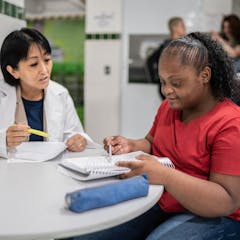
Students of color in special education are less likely to get the help they need – here are 3 ways teachers can do better
Mildred Boveda , Penn State
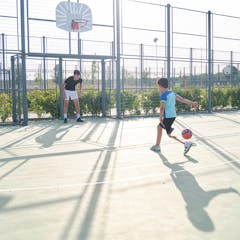
Disabled children still face exclusion in PE – here’s what needs to change
Tom Gibbons , Teesside University and Kevin Dixon , Northumbria University, Newcastle
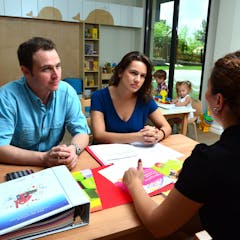
Children on individual education plans: What parents need to know, and 4 questions they should ask
Tori Trajanovski , York University, Canada

Restraining and secluding students with disabilities is an urgent human rights issue
Nadine Bartlett , University of Manitoba and Taylor Ellis , University of Manitoba
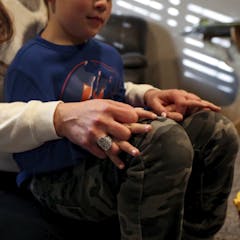
Coronavirus: Distance learning poses challenges for some families of children with disabilities
Jess Whitley , L’Université d’Ottawa/University of Ottawa

Schools are failing pupils with special needs, despite best efforts of dedicated staff
Cathy Tissot , University of Reading and Anna Tsakalaki , University of Reading


The British government is failing pupils with special needs – here’s how to change that
Mel Ainscow , University of Manchester

Most Australian teachers feel unprepared to teach students with special needs
Jane Jarvis , Flinders University

World Autism Day – let’s allow disability to change our societies for the better
Kimberly Maich , Memorial University of Newfoundland

Betsy DeVos’ 6-month report card: More undoing than doing
Dustin Hornbeck , Miami University

Five iPad apps that can help students with dyslexia
Myles Pilling , Bath Spa University

The trouble with teenagers: it stems from what they learn about friendship in school
Jonathan Rix , The Open University

Students with autism need targeted attention – not a cage
Leigh Burrows , Flinders University

Special needs children asked to stay home when inspectors call
John MacBeath , University of Cambridge and Maurice Galton , University of Cambridge

Why children with autism often fall victim to bullies
Judith Hebron , University of Manchester

Changes to special needs education may shut out parents
Helen Knowler , University of Bristol
Related Topics
- Children with disability
- Children with special needs
- Education policy
- Inclusive education
- Special education
- UK education
Top contributors
Senior Lecturer in Mindfulness and Education, Flinders University
Professor of participation and learning support, The Open University
Emeritus Professor, Faculty of Education, University of Cambridge
External lecturer, Assistive Technologist, Specialist SEND ICT Consultant, Bath Spa University
Research Fellow, Manchester Institute of Education, University of Manchester
Assistant Professor of Educational Leadership and Policy Studies, University of Memphis
Associate Professor, UCL
Associate Professor, Faculty of Education, Memorial University of Newfoundland
Research Associate, Department of Psychiatry and Behavioural Neurosciences, McMaster University
Senior Lecturer in Education, Flinders University
Professor, Department of Psychiatry and Behavioural Neurosciences, McMaster University
Senior Lecturer of Sports Sociology, Teesside University
Research assistant, Faculty of Education, University of Manitoba
Postdoctoral Fellow, University of the Witwatersrand
- X (Twitter)
- Unfollow topic Follow topic
The Number of Students in Special Education Has Doubled in the Past 45 Years

- Share article
The number of students in special education in the United States has doubled over the past four decades, creating a rising share of public school kids who need special education services.
That’s according to the Pew Research Center, which collected data from the National Center for Education Statistics for a report on students in special education for Disability Pride Month, which is celebrated each year in July.
The total number of students in special education went from 3.6 million in the 1976-77 school year, to almost 7.3 million in 2021-22. These students now make up 15 percent of the K-12 student population across the country, nearly double what it was in the late 1970s.
The Individuals with Disabilities Education Act (IDEA), passed in 1975, is the law that requires all students with disabilities to get access to “free appropriate public education.” Starting the following school year, NCES started collecting nationwide data on students with disabilities from ages 3 to 21.
All students in special education need Individualized Education Programs , or IEPs, to meet their educational needs. While the number of students with IEPs has steadily increased, special education teacher shortages have also increased, causing a strain on special education services, according to experts.
Here are some statistics about special education over the past few decades:
Students in special education make up a rising share of the student population
The number of students in special education has been steadily increasing since the NCES data collection first began, in 1976.
In the last decade, the percentage of students in special education in schools has increased from about 13 percent of the total student population in 2011-12, to almost 15 percent in 2021-22. In 1976-77, students in special education made up 8 percent of the overall student population.
Amid the COVID-19 pandemic, the number of students with IEPs dropped by 0.1 percent, between 2019–20 and 2020–21, going from 7.3 to 7.2 million students, according to NCES . The drop may be due to some learning difficulties and health concerns students with disabilities and their families faced during the first year of the pandemic, when special education services may have been limited , according to the Pew report .
The 2020-21 school year was the first time the number of students in special education had decreased in a decade. In 2021–22, which is the latest year that NCES has published data, special education enrollment almost rebounded to pre-pandemic levels.
But because the total public school enrollment dropped by 3 percent during the pandemic and didn’t fully recover in 2021-22, the percentage of public school students who were served under IDEA continued its upward trend, reaching an all-time high in the last school year.
Schools struggling to fill special education teacher vacancies
One of the most challenging aspects of making sure all students in special education receive the services they need is the staffing shortages a lot of districts are facing, experts told EdWeek.
While staffing shortages aren’t exclusive to special education, districts are specifically struggling to find special education teachers, according to the Pew report. Forty percent of all public schools that had a special education teaching vacancy reported that they either found it very difficult to fill the position or were not able to do so, according to an NCES report.
The only teaching vacancy districts struggled more with was foreign language teachers, according to the Pew report.
Learning disabilities are the most common reason for IEPs
The most common type of disability category under IDEA is “specific learning disability,” which includes students who have difficulty reading, writing, or doing math, according to NCES data. These learning disabilities are often called dyslexia , dysgraphia , and dyscalculia respectively.
In 2021-22, about 32 percent of all students in special education, or about 2.3 million students, had a specific learning disability. The second most common category for students to be on IEPs is speech or language impairment. Nineteen percent of students with IEPs had this disability, according to the Pew report. Fifteen percent had a chronic or acute health problem that adversely affected their education performance, the report said.
Finally, 12 percent of all students in special education have autism spectrum disorder. While the percentage of students in special education with autism has increased over the last decade, the share of students with specific learning disabilities and speech or language impairments has gone down, according to the Pew report.
Percentage of students in special education varies widely by state
Thirty eight states saw increases in the number of students with special education needs over the last two decades, according to the Pew report.
The biggest increase was in Utah, where the number of students with IEPs increased by 65 percent. Rhode Island saw the largest decline in the same time period, at 22 percent.
The discrepancies in the percentages of students with IEPs in each state may be a result of state policies and the way officials interpret eligibility criteria, according to a 2019 Government Accountability Office report.
That’s why the number of students in special education varies widely in each state . New York serves the largest share of disabled students in the country at 20.5 percent of its overall public school enrollment, according to Pew, followed by Pennsylvania at 20.2 percent, and Maine at 20.1 percent. Meanwhile, students in special education account for just more than 11 percent of the total student population in Hawaii, Idaho, and Texas.
Sign Up for EdWeek Update
Edweek top school jobs.

Sign Up & Sign In


COMMENTS
Children with disabilities are missing school because of a staffing crisis A special education staffing crisis is raging through many U.S. school districts. It's taking a toll on students and ...
When the Individuals with Disabilities Education Act (IDEA) was passed in 1974, it authorized federal funding for up to 40% of what it costs to provide special education services for students with ...
When the "Education for All Handicapped Children Act" passed, in 1975, students with disabilities who were f ound eligible for special education services would be provided, by law, a free and appropriate public education using an individualized education program (IEP)— based on the special education evaluation and the unique strengths and needs of the student.
In-person school resumed earlier in Boston for special education students than for those without special needs. David L. Ryan/The Boston Globe via Getty Images October 17, 2022
In the 2020-2021 school year, about 15% of all public school students received special education services under federal law, according to the National Center for Education Statistics. Among kids ages 6 and older, special education enrollment rose by 2.4% compared with the previous school year, according to federal data.
A growing number of students in public schools - right now, about 15% of them - are eligible for special education services. These services include specially designed instruction for students ...
More than 7.5 million American students have disabilities that qualify them for individual education plans. But teachers trained in this critical area are in short supply. Special education ...
A version of this article appeared in the February 07, 2024 edition of Education Week as Schools Should Boost Inclusion of Students With Disabilities, Special Olympics Leader Says Most Popular Stories
Browse Special needs news, ... Articles on Special needs. ... How schools should support students with special educational needs and disabilities is a controversial area of research. Debates ...
The number of students in special education in the U.S. has doubled, from 3.6 million in 1976-77 to almost 7.3 million in 2021-22.